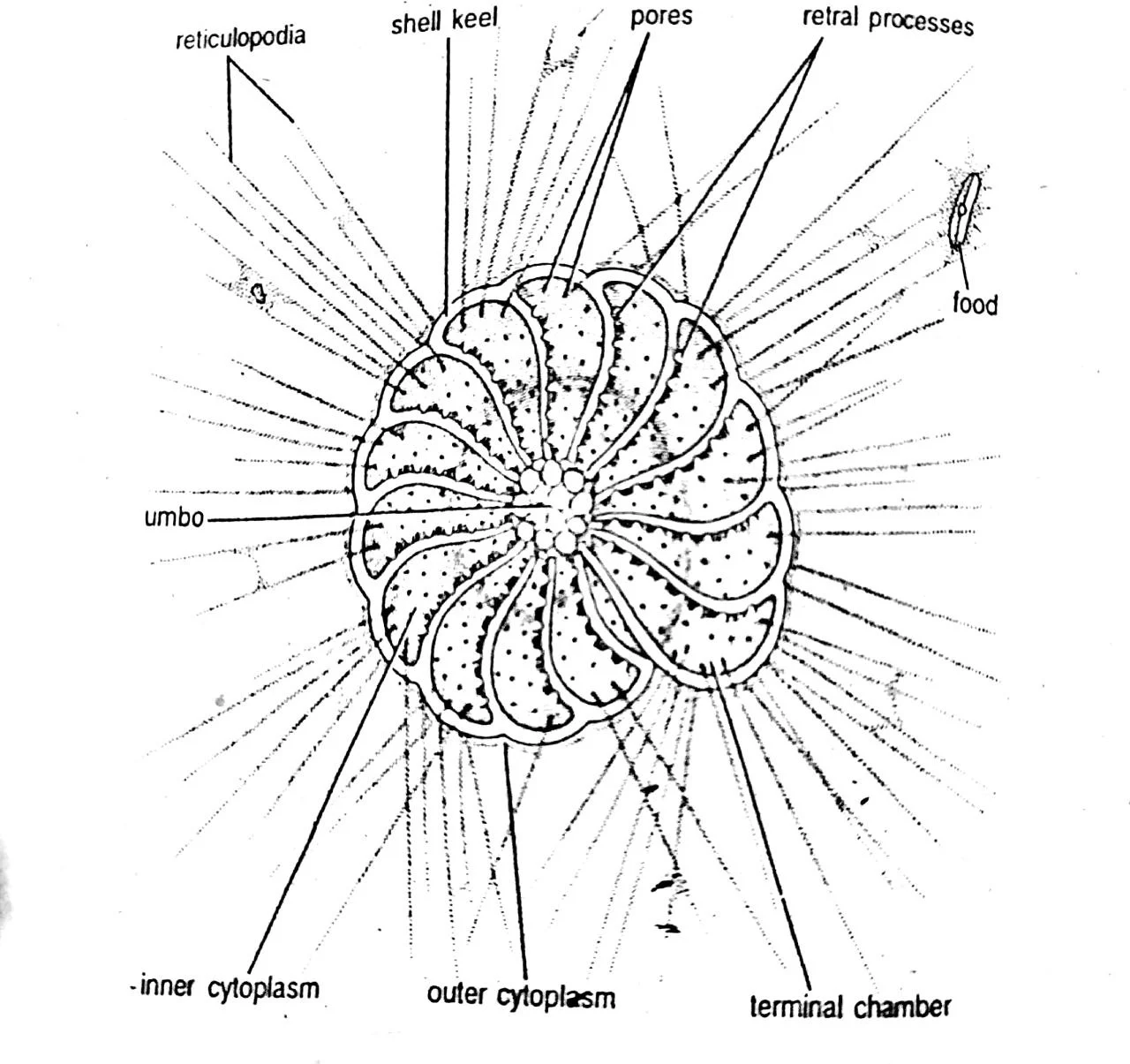Systematic Position / Classification
Phylum: Retaria
Class: Globothalamea
Order: Rotaliida
Family: Elphidiinae
Genus: Elphidium
Species: Elphidium crispum
Habit and Habitat
- It is a free-living, marine, shelled-protozoan or foraminiferan.
- It occurs in the littoral zone of the sea down to about 600 meters.
- It is commonly found creeping about on sea weeds.
- It also occurs in brackish waters.
- It has many chambered shells and thread-like axopods.
- It mainly feeds on small algae and bacteria.
General Characteristics

- The size of Elphidium crispum ranges from 200 to 500 micrometers in diameter.
- It is a shelled protozoan.
- It exhibits the phenomenon of dimorphism, i.e., Elphidium exists in two distinct forms—large megalospheric and small microspheric forms.
- The microspheric form is small and multinucleate.
- The microspheric form exhibits the asexual mode of reproduction.
- The megalospheric form is large and uninucleate.
- The megalospheric form exhibits the sexual mode of reproduction.
- The shell of Elphidium crispum is disc-shaped, flattened, and slightly elongated in one direction.
- The aperture, or the opening in the shell, is on one side.
- Elphidium crispum is a benthic species, which means it lives on the sea floor.
- Elphidium crispum reproduces asexually by dividing into two daughter cells.
- It can also reproduce sexually by producing gametes.
Locomotion / Movement
- Elphidium crispum creeps slowly over the substratum on the sea bottom with the help of its reticulopodia.
- The reticulopodia are arranged in bundles around the shell.
- With the contraction of distally placed bundles, the body is pulled or dragged forward.
Nutrition / Food and Feeding
- Elphidium crispum is typically holozoic.
- It feeds upon minute organisms like diatoms, other protozoans, crustacean larvae, etc.
- The net-like reticulopodia are thought to secrete an external mucous layer to trap the food organisms.
- The mucous layer contains proteolytic secretions which paralyze the prey and initiate its digestion even during capture.
- The captured food, enclosed in a food vacuole, is drawn into the endoplasm by the withdrawal of reticulopodia filaments towards the interior of the body.
- Digestion is normally completed outside the shell and the products of digestion pass into the endoplasm.
———- THE END ———-
Read More:

Md Ekarm Hossain Bhuiyan is a dedicated zoology graduate with a profound passion for the study of animal life. He completed his primary and secondary education at Ispahani Public School and College, renowned for its commitment to academic excellence. He then pursued his secondary education at Government Science College. After that he achieved graduation at Department of Zoology, Jagannath University. His educational background and enthusiasm for zoology position him to make meaningful contributions to the field of biological sciences in Bangladesh.